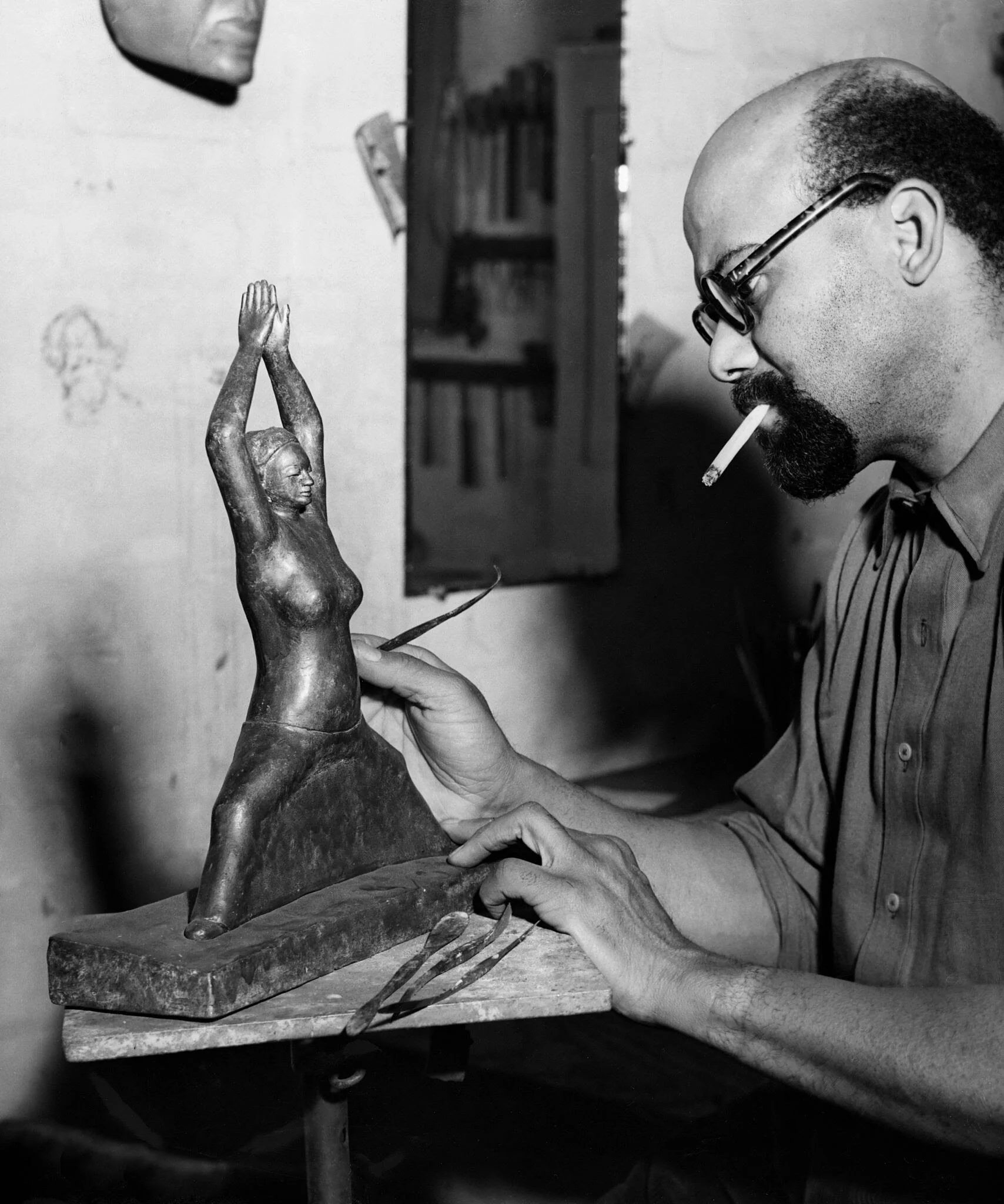Britain’s Caribbean Artists Movement (1966 – 1972)
The Caribbean Artist Movement started in a small London flat in Mecklenburgh Square in 1966 by a Caribbean writer on study leave wishing quite naturally, to get in touch with as many Caribbean artists as possible. Where were they? Who were they? This course examines the roots/routes of The Caribbean Artists Movement in Britain.
The course provides an introduction to the lives and works of the key participants, including those not only at the core, but those that documented it, and so too those on the periphery that lent the association support.
Tutor: Richard Rawlins
Richard Mark Rawlins is from the Port of Spain, Trinidad &; Tobago, currently lives and works in Hastings, UK. A graduate of the Royal College of Art’s print programme (2019), Rawlins’ research takes a transnational approach to ‘pop-cultural ’ poetics and politics of life in the Caribbean, the contested and resultant histories/realities of colonialism and it’s transpontine consequence, Black identity and diaspora politics.
Week 1:
The Genisis of the Caribbean Arts Movement
We will be looking at the social and political environment in which the Caribbean Arts Movement (CAM) was born by analysing the immigration acts of 1948, 1962 and 1972, which will give us a deeper understanding of how and why CAM was created. The session will also discuss the CAM's founders John La Rose, Andrew Salkey and Kamau Brathwaite, discovering how a community of West Indian intellectuals, artists, and writers felt responsible for shaping the conversation around their lives and identity and sparking change in British Society.
Week 2: In conversation with Erroll Lloyd
A very special talk with one of the key artists associated with the Caribbean Artists Movement, Erroll Lloyd.
Errol Lloyd is an artist, writer and art critic who was born in Jamaica in 1943. He moved to London in 1963 to study law but went on to establish a career as an artist and creative commentator. Lloyd is entirely self-taught and his practice includes sculpture, painting and illustration. An active member of the Caribbean Artists Movement, Lloyd also undertook numerous commissions to create busts of notable figures such as, for example, Sir Alexander Bustamante (Prime Minister of Jamaica), John La Rose (writer and publisher) and Lord Pitt (politician).
Errol Lloyd, The Lesson, 1972.
Lloyd has designed cover art for numerous books, notably for Bogle-L’Ouverture (as well as for the other pioneering black-owned publishers New Beacon Books and Allison & Busby), as well as having his paintings featured on greetings cards. He produced the illustration for the cover of Walter Rodney’s The Groundings With My Brothers (1969), the first title published by Bogle-L’Ouverture. Lloyd also worked with other publishers including Random House, Penguin Books and Oxford University Press. His novel for teenagers, Many Rivers to Cross (1995), was nominated for a Carnegie Medal. His involvement in Black British arts and activism is both prolific and far-reaching, as is demonstrated by his diverse ability that ranges from portraying notable Black figures in monumental busts to creating sensitive book illustrations. His work expresses his commitment to celebrating and advancing creativity, whether through his own artistic practice or through writing and academia supporting other artists.
Read: Somerset House - Caribbean Artists Movement: Life Lessons
Week 3: Guest Lecture on the life and works of Ronald Moody delivered by Ego Ahaiwe Sowinski
Ronald Moody in his workshop
Ego Ahaiwe Sowinski is currently doing her PHD on Conjunctural Encounters and Legacy in the Archive: The Life, Works, Mobilities and Philosophy of Ronald Moody at Chelsea College of Art and Tate Britain. This doctoral research investigates the life, works, mobilities and philosophy of Ronald Moody (1900–1984), placing much needed critical attention on the artworks and personal papers of the Jamaican sculptor and philosopher. Focusing predominantly on his life in Britain (from 1923 onwards), the research will contextualise Moody as a complex, networked figure and will examine the interconnectedness of key artistic relationships.
In the lecture, Ego will explore Moody’s art, legacy, philosophy, unpublished writing and his relationship with nature and spirituality, as well as his role in the Caribbean Art Movement, Commonwealth and Harlem Renaissance. The aim is to move beyond the dominant, accepted narrative that grounds Moody as forgotten, invisible and marginalised, and instead to recast Moody through a lens that explores his art practice, contributions, impact and value to the landscape of British and diasporic art. Moody’s sculpture was directly influenced by Egyptian archaeological finds displayed at the British Museum in 1928; following a visit, Moody turned from his training in dentistry to a career as a sculptor, becoming one of the most significant modernist sculptors of the twentieth century.
Week 4: Britian’s Caribbean Visual Artists
In this last and final session, we will look at some of the prominent visual artists of CAM, which include; Errol Llyod, Aubrey Williams, Ronald Moody, Althea McNish, Winston Branch and Paul Dash and discuss what motivated them and their importance to the UK. Their paving the way has inspired a generation of Black artists. We will analyse this impact.


